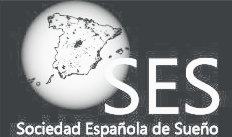Monitoring sleep depth: analysis of bispectral index (BIS) based on polysomnographic recordings and sleep deprivation.
Giménez S, Romero S, Alonso JF, Mañanas MÁ, Pujol A, Baxarias P, Antonijoan RM. J Clin Monit Comput. 2015 Nov 14.
The assessment and management of sleep are increasingly recommended in the clinical practice. Polysomnography (PSG) is considered the gold standard test to monitor sleep objectively, but some practical and technical constraints exist due to environmental and patient considerations. Bispectral index (BIS) monitoring is commonly used in clinical practice for guiding anesthetic administration and provides an index based on relationships between EEG components. Due to similarities in EEG synchronization between anesthesia and sleep, several studies have assessed BIS as a sleep monitor with contradictory results. The aim of this study was to evaluate objectively both the feasibility and reliability of BIS for sleep monitoring through a robust methodology, which included full PSG recordings at a baseline situation and after 40 h of sleep deprivation. Results confirmed that the BIS index was highly correlated with the hypnogram (0.89 ± 0.02), showing a progressive decrease as sleep deepened, and an increase during REM sleep (awake: 91.77 ± 8.42; stage N1: 83.95 ± 11.05; stage N2: 71.71 ± 11.99; stage N3: 42.41 ± 9.14; REM: 80.11 ± 8.73). Mean and median BIS values were lower in the post-deprivation night than in the baseline night, showing statistical differences for the slow wave sleep (baseline: 42.41 ± 9.14 vs. post-deprivation: 39.49 ± 10.27; p = 0.02). BIS scores were able to discriminate properly between deep (N3) and light (N1, N2) sleep. BIS values during REM overlapped those of other sleep stages, although EMG activity provided by the BIS monitor could help to identify REM sleep if needed. In conclusion, BIS monitors could provide a useful measure of sleep depth in especially particular situations such as intensive care units, and they could be used as an alternative for sleep monitoring in order to reduce PSG-derived costs and to increase capacity in ambulatory care.
Ventana Científica. Diciembre 2015. Artículo 118
Monitoring sleep depth: analysis of bispectral index (BIS) based on polysomnographic recordings and sleep deprivation.


